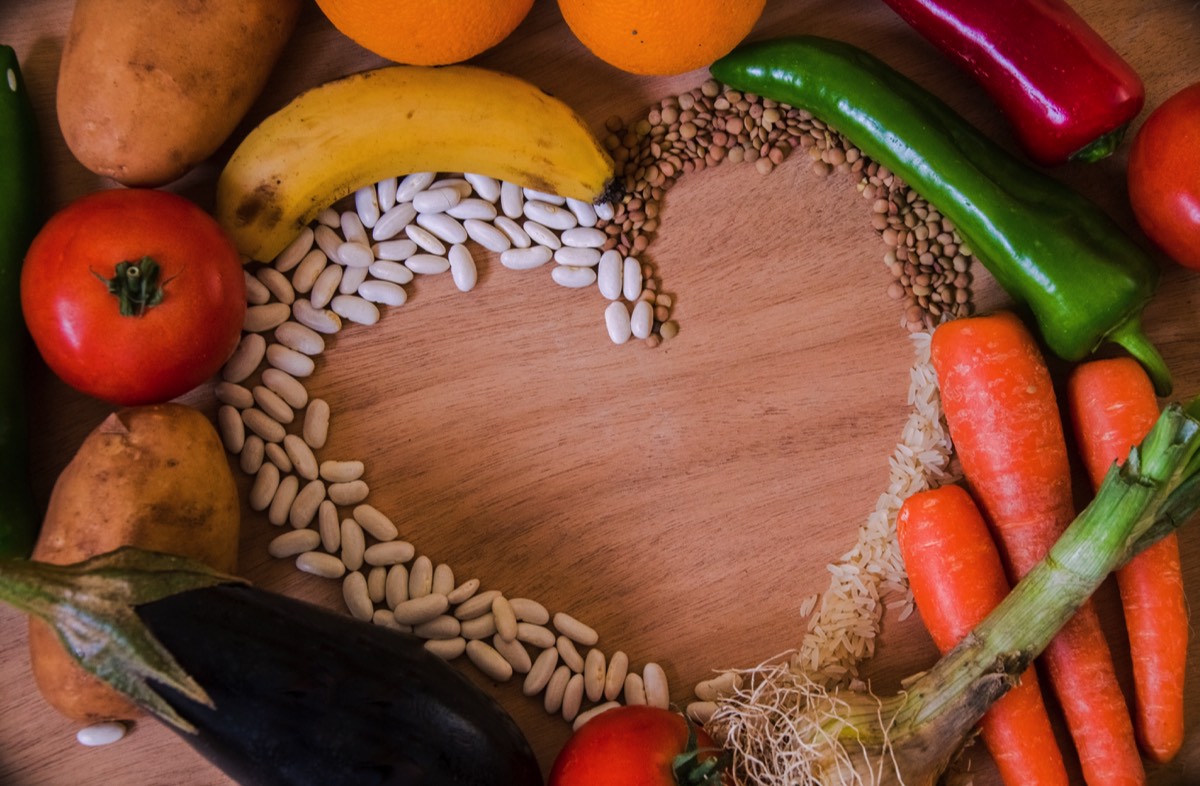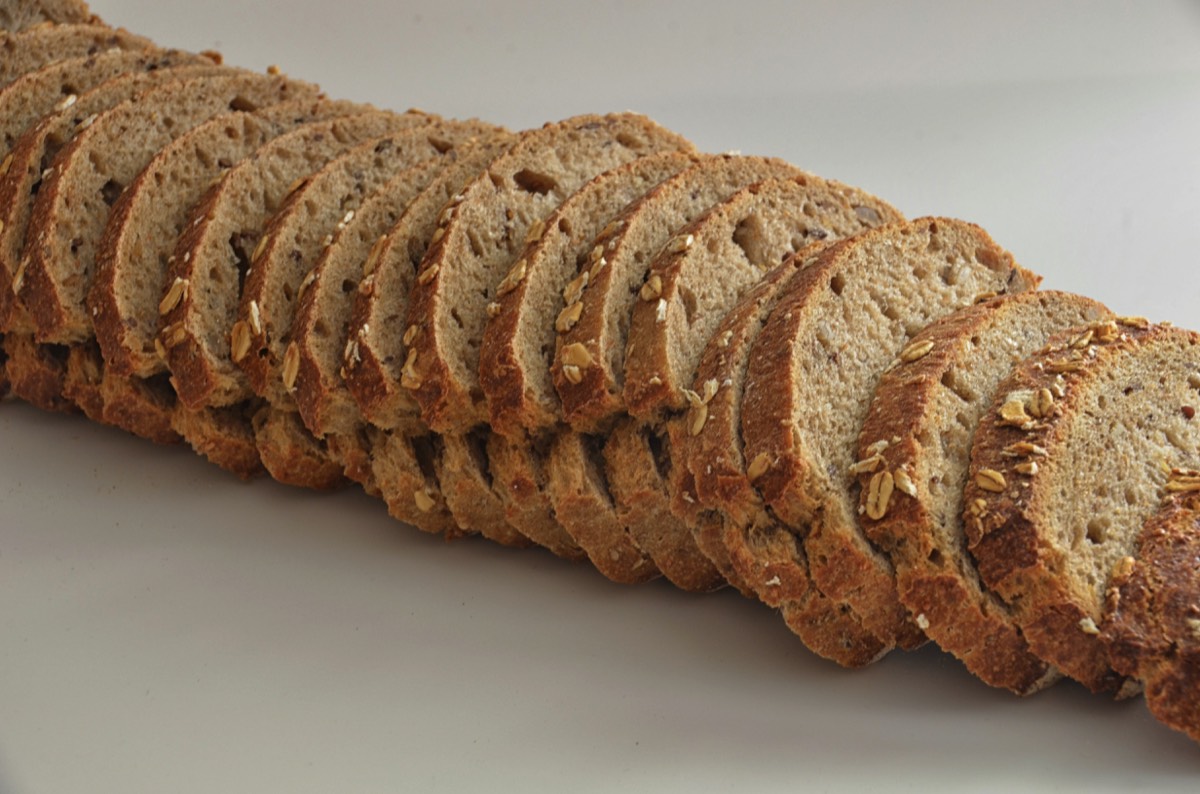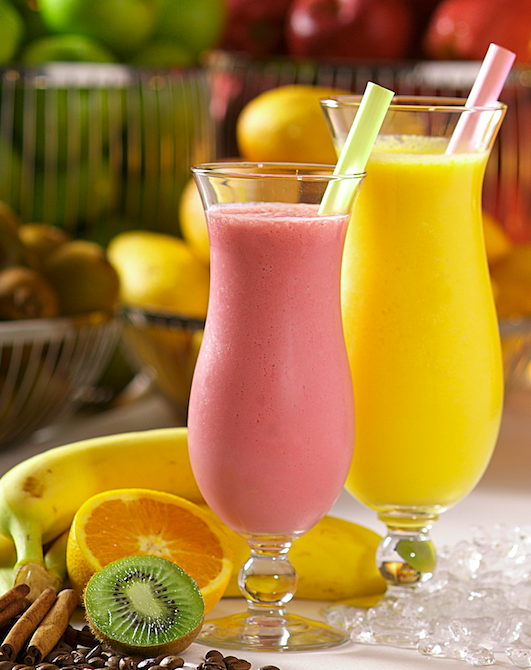
The Most Deficient Nutrient in America
I won't keep you in suspense…the most deficient nutrient in America is fiber.
Fiber. This is amazing when you learn where fiber is found. It's in fruit, vegetables, wheat, oats, rice and pulses (legumes) like beans, lentils and chickpeas. How can we not get enough?
Unfortunately, the standard American diet consists of more processed food than whole food. What this means in terms of fiber is that the fiber is removed during processing. And our palates have been trained to love the taste of those fiberless processed versions.
For example:
Another problem is that Americans don't eat enough fruit, vegetables, or pulses (beans, lentils, peas). We should be getting some of our protein from plant sources instead of from meat, and if we did that, we would get more fiber.
Our salads are lettuce-based and often have more toppings than vegetables. Lettuce has a little fiber, but not as much as a bean-based salad, for example.
Another reason for the lack of fiber is what I call Carb Fear. There are so many diets that focus on avoiding carbohydrates, which is a huge problem, because fiber is a type of carbohydrate. Our bodies are supposed to get 45-65% of our daily calories from carbohydrates. Now understand that this isn't referring to simple carbs like sugary drinks and junk food; the carbs we need are complex. Complex carbs don't have the same effect on blood sugar, and do not cause weight gain. If you are concerned about weight, eat more fiber, not less!
Many Americans struggle with regularity because of this and take a fiber supplement. While that solves one problem, our gut microbes can't metabolize fiber from a supplement, so they starve and the benefits of a healthy gut are lost.
There's also a trend of products with "Added fiber" right now. I've seen drinks with "Prebiotics" and lots of foods that would normally have little or no fiber, like white pasta and snack foods, that have had fiber added to attract those who are looking to add more fiber to their diets. Keto and low carb products are notorious for this. Unfortunately, our gut microbes can't metabolize this, either. Studies are currently showing that this type of fiber may actually be harmful, as well, so avoid it. The fiber you need to eat is fiber that is naturally occurring in foods like fruits, vegetables, whole grains and pulses/legumes (If you don't know what that is…think of the dry bean section for a minute…many different beans, lentils, chickpeas…and most are available canned if you prefer, just look for low sodium varieties, because they usually have way too much salt.)
Lack of fiber is a much bigger problem than irregular bowel movements. Not getting enough fiber puts us at risk for heart disease, digestive cancers, varicose veins, adult-onset diabetes, and poor weight maintenance. Taking a supplement won't change that, because it's the work of our gut microbes that protect us from these things.
So how can you make sure you get enough fiber? Do as many of the following as possible (there's no such thing as too much fiber from food).
If you are diabetic, pre diabetic, or overweight and need to learn to stabilize blood sugar, see the article on Diabetes and Weight Management.
Fiber. This is amazing when you learn where fiber is found. It's in fruit, vegetables, wheat, oats, rice and pulses (legumes) like beans, lentils and chickpeas. How can we not get enough?
Unfortunately, the standard American diet consists of more processed food than whole food. What this means in terms of fiber is that the fiber is removed during processing. And our palates have been trained to love the taste of those fiberless processed versions.
For example:
- White rice is brown rice that has had the fiber removed.
- White bread and white pasta is made from wheat that has had the fiber removed.
Another problem is that Americans don't eat enough fruit, vegetables, or pulses (beans, lentils, peas). We should be getting some of our protein from plant sources instead of from meat, and if we did that, we would get more fiber.
Our salads are lettuce-based and often have more toppings than vegetables. Lettuce has a little fiber, but not as much as a bean-based salad, for example.
Another reason for the lack of fiber is what I call Carb Fear. There are so many diets that focus on avoiding carbohydrates, which is a huge problem, because fiber is a type of carbohydrate. Our bodies are supposed to get 45-65% of our daily calories from carbohydrates. Now understand that this isn't referring to simple carbs like sugary drinks and junk food; the carbs we need are complex. Complex carbs don't have the same effect on blood sugar, and do not cause weight gain. If you are concerned about weight, eat more fiber, not less!
- Veggies (yes, even potatoes!)
- Fruit (no, that is not the same as sugar in sweets)
- Whole grains (not white breads and pastas)
- Legumes (which are also a cholesterol-free source of protein)
Many Americans struggle with regularity because of this and take a fiber supplement. While that solves one problem, our gut microbes can't metabolize fiber from a supplement, so they starve and the benefits of a healthy gut are lost.
There's also a trend of products with "Added fiber" right now. I've seen drinks with "Prebiotics" and lots of foods that would normally have little or no fiber, like white pasta and snack foods, that have had fiber added to attract those who are looking to add more fiber to their diets. Keto and low carb products are notorious for this. Unfortunately, our gut microbes can't metabolize this, either. Studies are currently showing that this type of fiber may actually be harmful, as well, so avoid it. The fiber you need to eat is fiber that is naturally occurring in foods like fruits, vegetables, whole grains and pulses/legumes (If you don't know what that is…think of the dry bean section for a minute…many different beans, lentils, chickpeas…and most are available canned if you prefer, just look for low sodium varieties, because they usually have way too much salt.)
Lack of fiber is a much bigger problem than irregular bowel movements. Not getting enough fiber puts us at risk for heart disease, digestive cancers, varicose veins, adult-onset diabetes, and poor weight maintenance. Taking a supplement won't change that, because it's the work of our gut microbes that protect us from these things.
So how can you make sure you get enough fiber? Do as many of the following as possible (there's no such thing as too much fiber from food).
- Eat fruit every day
- Eat vegetables every day
- Eat more pulses/legumes (beans, chickpeas, lentils, etc)
- Switch to whole grain bread, rice and pasta
If you are diabetic, pre diabetic, or overweight and need to learn to stabilize blood sugar, see the article on Diabetes and Weight Management.
TIPS FOR SUCCESS
Increase your fiber slowly so your body has time to adjust without digestive discomfort.
- Have high fiber for breakfast, My smoothie recipes are fiber-packed and so delicious. If you want to experiment creating your own, try using several servings of fruit (you can even hide veggies in there), and add some raw rolled oats (old-fashioned oats), and a spoonful of flaxseed meal or chia seed.
- Every day, add 1 tablespoon of flax seed meal to a smoothie, beverage or stir into soup or soft food.
- Add a teaspoon of Inulin to a glass of water every day (This gut microbe-loving fiber is completely tasteless and dissolves to be invisible.)
- Use fruit as a topping, a snack or a dessert
- Instead of having a side of vegetables, cover half your plate in veggies. If you don't care for most veggies, you need to try another way of cooking them. Boiling, steaming and raw are about as flavorless as it gets, so get creative with seasonings, cooking methods and recipes. See How to Make Those Veggies Delicious for help.
- Try a legume-based salad - check my recipe page for good suggestions
- Buy whole wheat or multigrain sliced bread that has 1 gram of fiber for every 5 carbs
- Try whole grain pasta - if you've tried it before and didn't like it, try again; it has come a long way from when it was first introduced - my family enjoys Barilla brand
- Have an appetizer that is fiber rich (veggie soup, bean soup, salad)
- Understand that foods labeled "added fiber" is not the same thing - it's complicated, but "added fiber" may be more harmful to your health than fiber that comes from a food ingredient




NutriNeedz
Kentucky, USA
Kentucky, USA